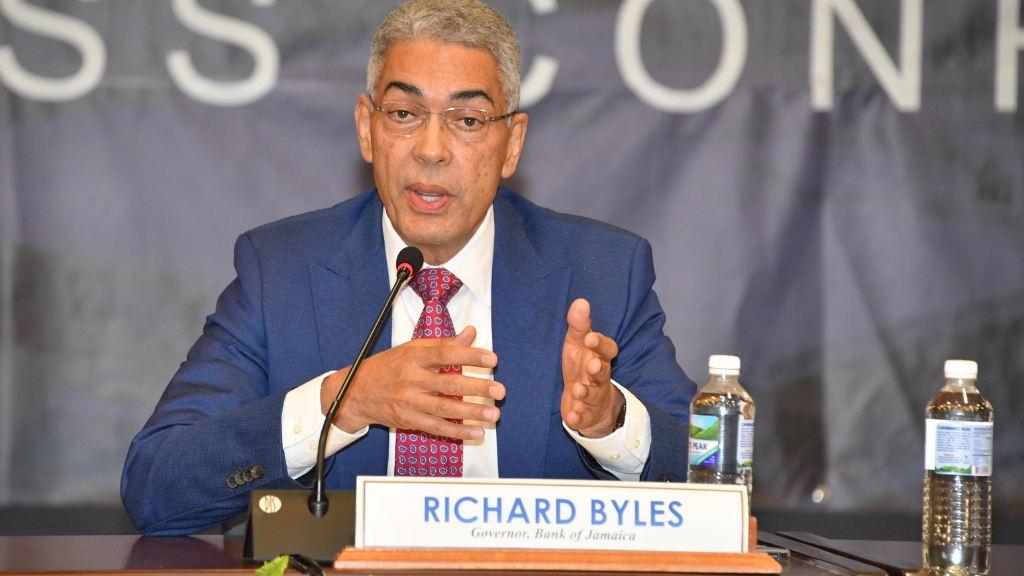Jamaica’s headline and core inflation rates have fallen within the central bank’s four to six per cent target range, following out-turns for April.
Headline inflation, which fell to 5.8 per cent, is a measure of the rate of price increases within the economy and includes commodities such as food and energy.
Core inflation, which measures the change in the cost of goods and services excluding food and energy, dipped to 5.7 per cent.
Governor, Richard Byles, cited several factors contributing to domestic inflation declining while speaking during the Central Bank’s quarterly monetary policy media briefing at the BOJ Auditorium in downtown Kingston on Monday (May 22).
“At April, the key external drivers of headline inflation, such as grains, fuel, and shipping prices, continued to decline, and inflation expectations tracked downwards also,” Byles outlined.
He further said that the pace of monetary tightening by the United States (US) Federal Reserve Board also expectedly slowed, noting recent developments suggesting that interest rates in the US are at or near their peak.
“The primary mandate of the Bank of Jamaica and our resolve is to see inflation firmly anchored between four and six per cent, to allow all stakeholders, consumers, businesses and investors to be able to plan within a macroeconomic environment where inflation is low, stable and predictable,” Byles said.
He, however, cautioned that there is a risk of inflation again breaching the four to six per cent target temporarily, before being firmly anchored in that range.
Byles cited inflationary pressures in the domestic economy as a principal factor. These, he indicated, include adjustments to selected regulatory prices, such as the national minimum wage; recent increases in the cost of communication services; seasonal increases in agricultural prices, as well as pending increases in other regulated prices.
These, Byles emphasised, could temporarily lift inflation back above the bank’s target range over the next three to four months.
The Governor pointed out, however, that inflation is expected to trend back towards the target range by the December 2023 quarter, while reiterating decisions of the Monetary Policy Committee (MPC) that were announced on May 19.
These include holding the policy interest rate paid in overnight balances held by deposit-taking institutions (DTIs) at the BOJ at seven per cent, maintaining tight Jamaica dollar liquidity in the money market, and continuing to foster relative stability in the foreign exchange market.
“The committee is satisfied that its monetary policy actions since October 2021 have been effective in achieving the objective of reducing inflation, but is of the view that there is a need to maintain the policy stance until inflation is firmly contained in the four to six per cent corridor,” Byles said.
Meanwhile, the governor advised that possible risks to the inflation forecast are balanced.
These, he pointed out, include higher-than-projected future wage agreements, the stronger-than-anticipated impact of climate change on domestic agricultural prices, and a worsening in supply-chain conditions.
Byles also cited the possibility of higher-than-projected interest rates among the major developed economies worsening the interest differential, thereby putting pressure on the exchange rate, which would contribute to higher inflation in the economy.
Among the factors that could lead to lower-than-projected inflation are weaker-than-expected global growth, which could negatively impact domestic demand, as well as some adjustments to regulated prices not materialising.

